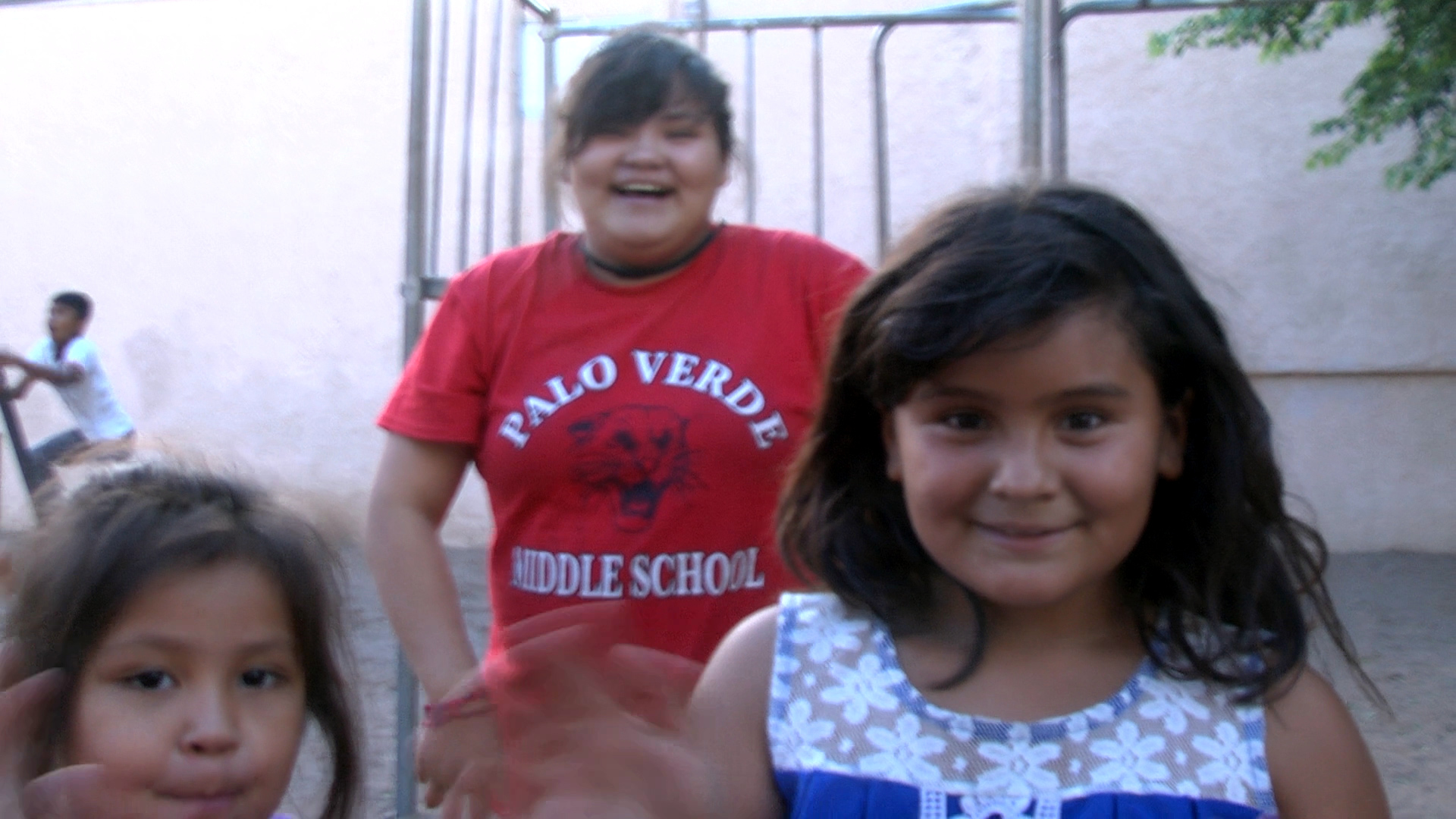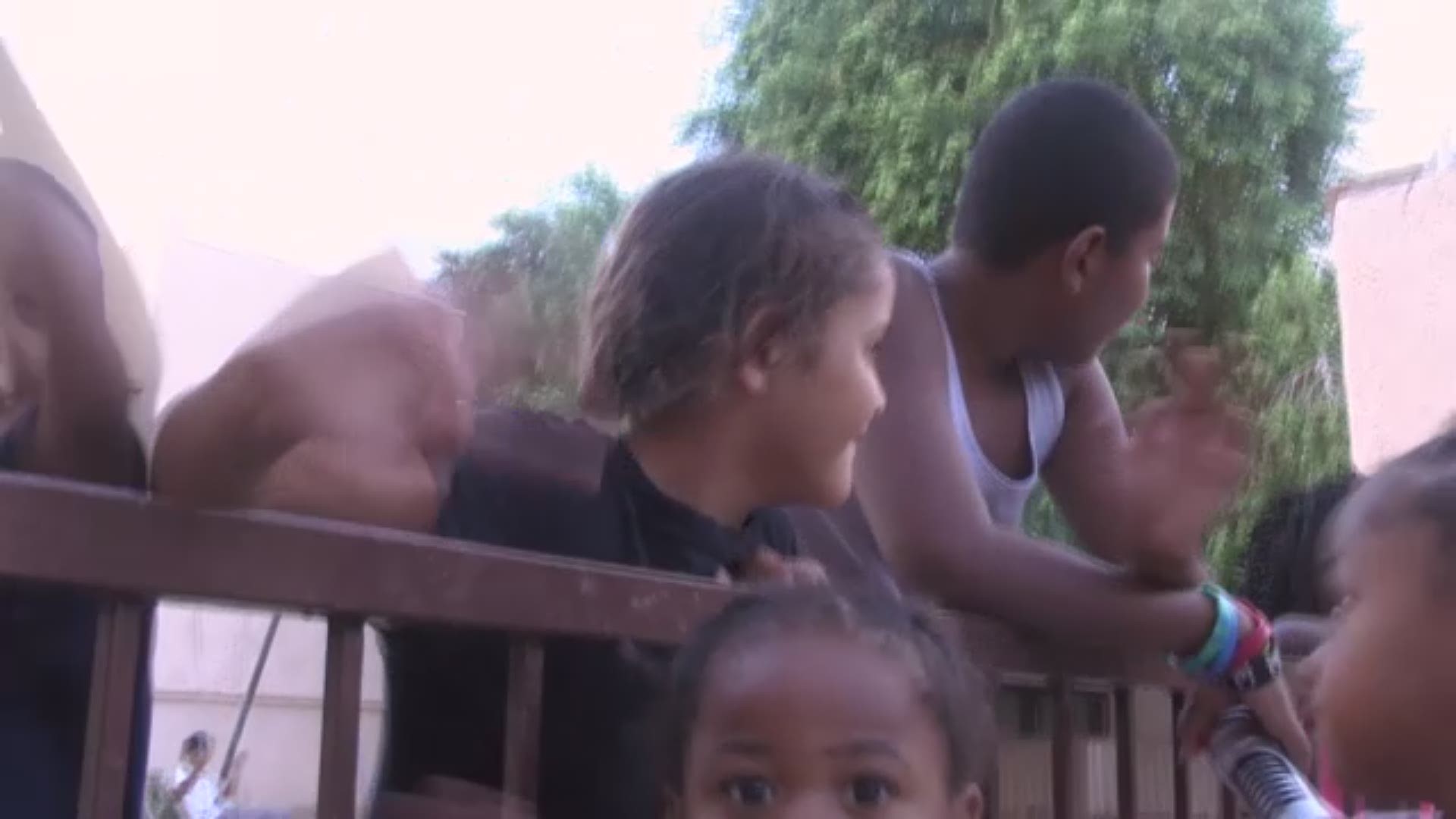In a quiet community in the heart of Phoenix, you can see faces of people from all over the world.
New refugee tenants, who are dropped off from the airport with nothing to their names, call this condo complex home.
Stories: • Arizona an unlikely haven
• A new home
• College a challenge
• A father's sacrifice
• About the project
• Refugees from Burma
• Refugees from around Africa
• Refugees from Iraq, Cuba, Afghanistan
• Refugees from Southeast Asia
The approximately 200 tenants who live in there are from 28 different countries and speak 40 different languages.
They’ve fled their home countries – places like Burundi, Burma, Iraq and Somalia – to escape persecution, conflict and war.
“We learn a lot of thing and we have a lot experience,” said Lydia Cung Hnem Khim, a Burmese refugee. “And also we have to communicate with different background and, you know, different people. We are learning about each other and we know that how we have to respect each other and we have to know that what is his culture and what is my culture, and stay balanced together.”

Perhaps without even realizing it, Arizonans have accepted 60,000 refugee neighbors such as these over the past 40 years.
From that number, Georgia and Anna Sepic have helped hundreds of refugee tenants, many of whom have become friends and a new generation of refugee leaders.
“And what actually makes this community unique is partnership, support from one to another group,” housing entrepreneur Georgia Sepic said.
The Sepics are a mother-daughter team of housing entrepreneurs who say they can solve refugee housing.
They are also heavy contributors to development and revitalization of the Canyon Community Core and the neighborhoods surrounding Grand Canyon University.
They work closely with researchers at the Arizona State University School of Social Work to continue research efforts in Arizona’s refugee communities.
Georgia and Anna Sepic's earliest work among refugees that gained attention was at the Serrano Village Apartments. The area had been a crime-ridden blight, but improved when the pair cleaned up the complex.
Serrano Village was in the news in 2013 after a group of Hispanic youths followed Burmese refugee children whom they had been bullying to a funeral. The youths stabbed several Burmese men, killing them when they tried to intervene.
The incident became a rallying point for the refugee community, who reached out to law enforcement, educators, and surrounding communities for help and reconciliation. The Sepics played a key role in the peacemaking process.
The Sepics are immigrants themselves. They arrived in the 1970s from the former Yugoslav Republic (now the Republic of Croatia).
Georgia Sepic came up with the “innovative housing model” for refugee resettlement years ago and at one time managed over 1,000 units across the U.S. Now that Anna Sepic is doing the same thing, Georgia has stepped back to allow Anna to be the face of the model.

Their “innovative housing model” lets property owners coordinate with resettlement agencies to concentrate refugees on a property and bring essential services to them.
The Sepics have brought a number of weekly programs to the apartment complex for tenants that would otherwise be scattered across Phoenix and hard to reach for many refugees.
“Everything from hospitality training, life skills training, English classes, tutoring with the kids, parenting in the United States, cultural competency training and how things are done here,” said Anna Sepic.
Local volunteers teach citizenship and pre-literacy ESL classes nearly all day, every day. Visiting GCU students host home and play nights on Wednesdays for school-age kids. ASU students teach weekly health and hygiene classes.
There are also a number of one-time events at the apartment complex. Recently, a visiting ASU student taught a finance class for kids. There are also various community-service projects and visits from local church groups.
Other classes are offered as needs arise, including legal competency, time management, safety awareness, law enforcement familiarization, and more.
This solution sidesteps issues such as transportation, safety and childcare that often create barriers for refugee self-help. It helps that refugees also make good tenants, the Sepics say.
Left alone, new families are vulnerable and lost in Arizona’s legal, social, education and medical networks. But at this Phoenix complex, help is just a few apartments away.
“It’s essentially a mentorship program and that, I think, is the biggest component that leads to successful integration of the family exponentially faster,” said Anna Sepic.
Basically, the Sepics aim to prepare their tenants to move out and live harmoniously with the greater community.
“Sometimes it is tough, sometimes it takes a little bit longer,” Georgia Sepic said. “But overall, I do believe that America is still the most beautiful, nicest country there is, and still willing, to open their arms. you know, and accept refugees.“
This complex isn’t meant to be a permanent home. Instead, it serves as a stepping stone as refugees learn what it means to be an American and Arizonan.
With this support system, refugees living at the complex have found more than shelter. They’ve found a community and a chance to begin anew.

